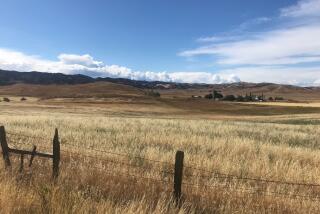Mt. Israel Dam Site to Be Studied for Quake Danger
- Share via
State dam safety engineers have ordered the Olivenhain Municipal Water District to conduct further geo-technical studies to determine if there are earthquake faults on the Mt. Israel site where a major dam is to be built.
The North County water district, which serves much of the San Dieguito inland area, plans to begin construction on the dam by the end of 1992. David McCollom, water district general manager, said the additional study would mean a delay of two more months, “but we believe we can still break ground this year.”
The earthquake fault was noted in earlier engineering studies of the site and spotted by state Division of Safety of Dams engineers reviewing the project recently.
Ron Delparte, field engineer with the state agency, confirmed that a fault had been recorded earlier, “which could affect the safety of the dam and the efficiency of the reservoir.”
The dam site is a box canyon at the 900-foot level of Mt. Israel on a 230-acre tract purchased by the Olivenhain water agency in 1979. The district plans to build either a 10,000-acre-foot reservoir to serve Olivenhain water customers at a cost of about $100 million or a 24,000-acre-foot reservoir to serve Olivenhain and surrounding water district customers with an estimated $200-million price tag.
McCollom said the geo-technical firms of Moore & Taber and Sergent, Hauskins & Beckwith have been hired to work with Boyle Engineering on more engineering studies at an estimated cost of $50,000.
The work will include excavating the alluvial soil from the site to the bedrock level and determining the location and extent of the fault. Infrared photography may be used to determine the location and the extent of the fault, McCollom said.
“Even if a fault is located, it is very unlike that it is an active fault,” McCollom said. “An inactive fault is not necessarily a dam-killer.”
He added that an inactive fault might pose a problem if it could not be sealed off, because it could result in a leak that would drain off the expensive imported water that will fill the reservoir.
More to Read
Sign up for Essential California
The most important California stories and recommendations in your inbox every morning.
You may occasionally receive promotional content from the Los Angeles Times.













